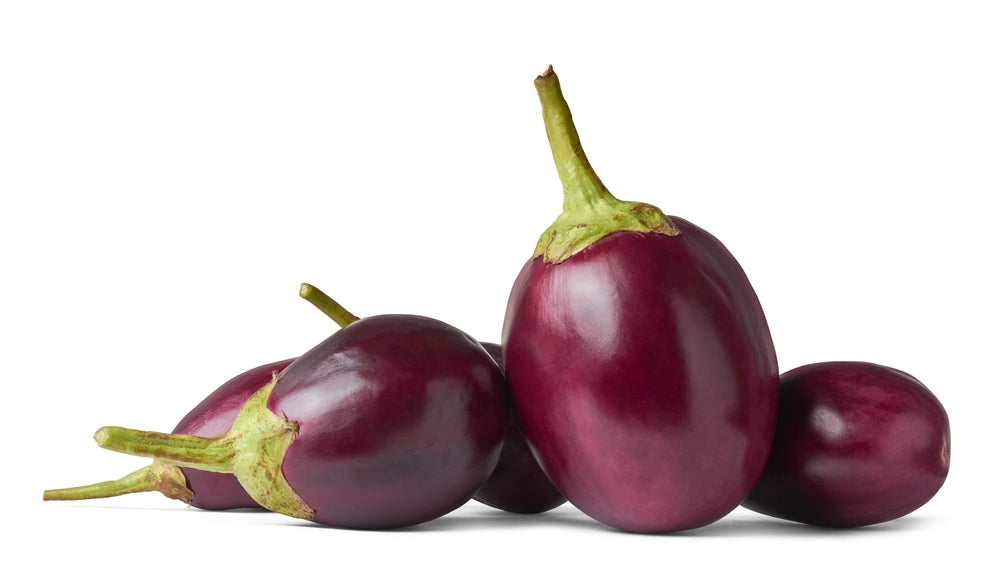A widespread myth claims that eggplants contain nicotine and can be used to quit smoking. We want to get to the bottom of whether eggplants really contain nicotine and whether one can become addicted to them. At the same time, we’ll show you a few more effective alternatives to cigarettes that are less harmful to your health.
Do eggplants really contain nicotine?
Nicotine is derived from the tobacco plant and is a neurotoxin. Plants produce the substance to deter pests. In the human body, nicotine induces a feeling of relaxation and promotes dopamine production. In high amounts, nicotine can also cause poisoning and can be fatal.
Indeed, some other plant species produce nicotine in very small amounts. Chief among these are nightshade plants such as eggplants. However, the amount of nicotine in eggplants is so minimal that it is barely detectable scientifically.
The nicotine content in eggplants depends on their ripeness: ripe eggplants contain less nicotine than green ones. Unripe eggplants should not be eaten at all, as they taste very bitter and can cause digestive issues.
On average, eggplants contain about 100 micrograms of nicotine per gram of fresh weight. Your body can easily digest these tiny amounts in the gut. You need not worry about addictive potential— to ingest the nicotine equivalent of one cigarette, you would have to eat at least 10 kilograms of eggplant, which is not advisable.
Which other plants contain nicotine?
Eggplants are not the only plants that produce nicotine. As mentioned, mainly nightshades contain trace amounts. A few more examples are:
Potatoes
Potatoes produce nicotine as well, and, like eggplants, green, unripe potatoes have higher levels than ripe ones.
Tomatoes
Tomatoes average about 7 micrograms of nicotine per gram. Again, the amount is far too low to have any effect in the body.
Peppers
Peppers also produce nicotine, especially hot and green varieties.
Cauliflower
Although cauliflower is not a nightshade, small amounts of nicotine have been detected. How cauliflower produces nicotine remains unknown.
Tea
Even some teas—black, green, and oolong—from the Camellia sinensis family can contain nicotine.
Alternatives to cigarettes that don’t grow in the garden
Nicotine-containing vegetables are not suitable for smoking cessation, as they contain far too little nicotine and must be eaten in enormous quantities. However, there are now a few clever smoke-free alternatives to cigarettes.
These include Chewing Bags and Nicotine Pouches. They are not burned but simply placed under the upper lip. Chewing Bags come in a variety of flavors, from minty to fruity to exotic.
The advantages of the smoke-free alternative are clear:
- Produces no unpleasant smoke
- Contains fewer toxins
- Available in various nicotine levels
Nightshades contain trace nicotine
Nightshades like eggplants do indeed produce trace nicotine, a neurotoxin plants use to ward off pests. Levels are highest when the fruit is unripe. Eggplants are not the only vegetables that produce it; potatoes, tomatoes, cauliflower, peppers, and even some tea plants produce nicotine.
However, the nicotine concentration is so low that it has no effect in the body and is easily digested. These plants cannot cause addiction and are absolutely unsuitable for smoking cessation. Products like Chewing Bags and Nicotine Pouches are a far better choice for gradually reducing nicotine intake.


